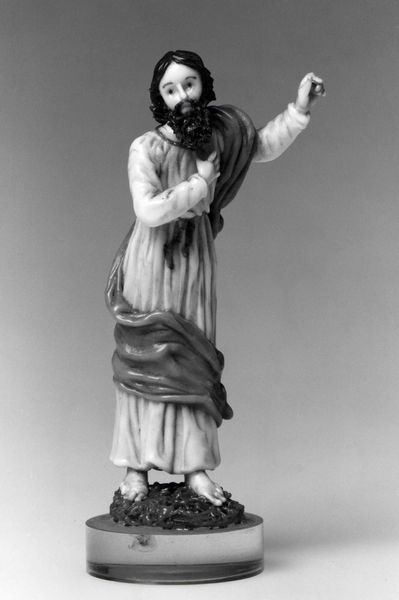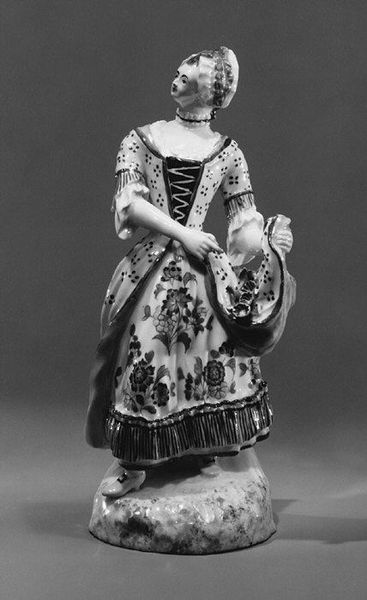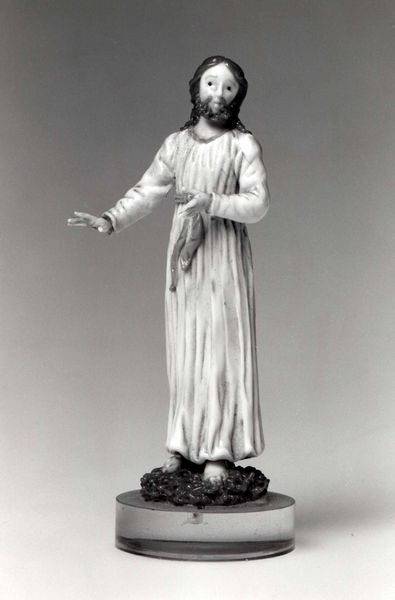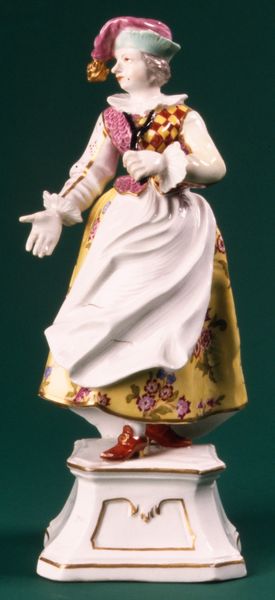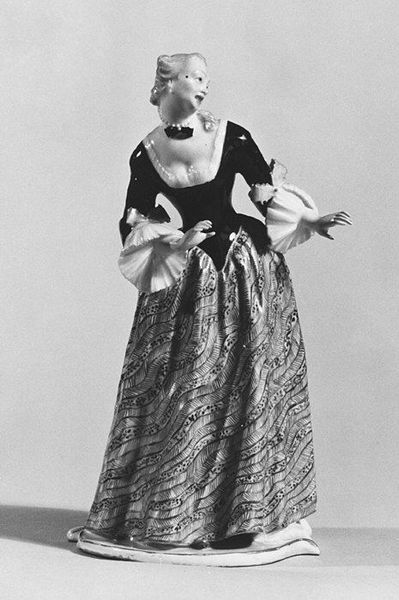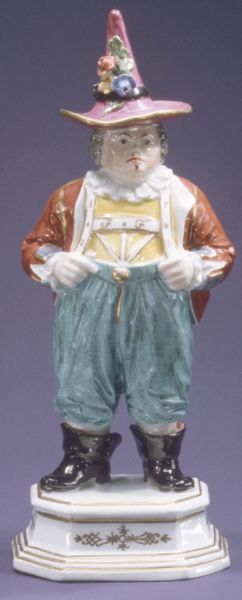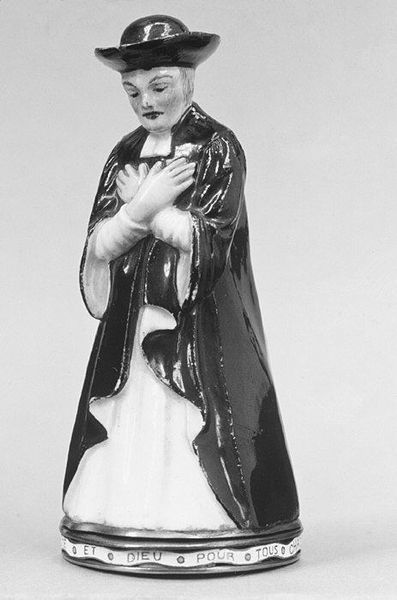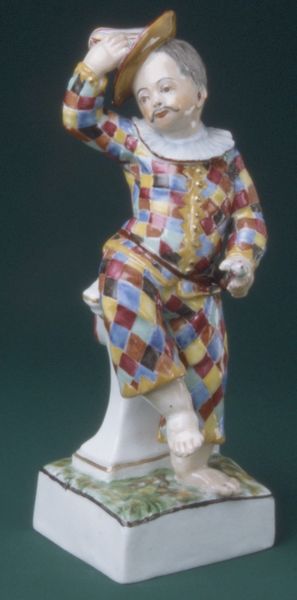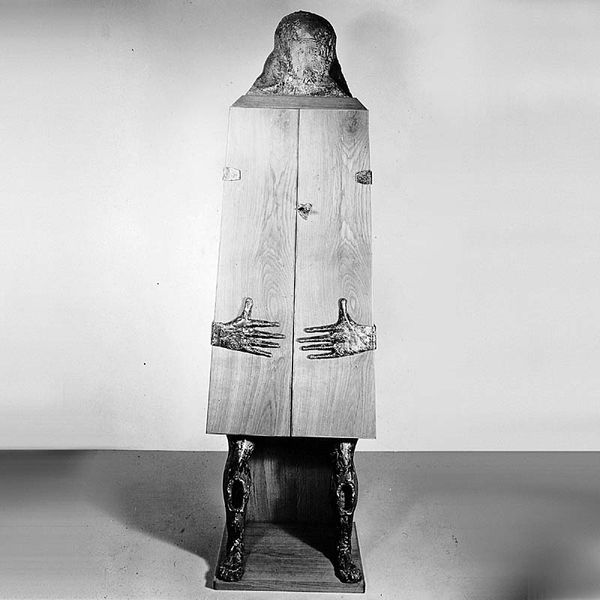
Dimensions: H. 7.6 cm
Copyright: Public Domain
This small sculpture of a cleric was created by the Haly workshop. It is likely from 18th-century Europe, a period when the Church held immense social, cultural, and political sway. Clerics, as religious leaders, wielded significant influence over people's lives, and their representation in art reflected this power. Visual codes like the cleric’s robes, his raised hand in blessing, all speak to his social standing and spiritual authority. During this period, religious institutions were often deeply intertwined with secular power structures, dictating moral codes, shaping education, and even influencing political decisions. Small sculptures like this were made for the wealthy and powerful as a show of their devotion and connection to the establishment. To understand it fully, we have to look at social and institutional histories of the time. By looking at the relationship between church and state, as well as the history of art production, we might understand more about the role of art in society.
Comments
No comments
Be the first to comment and join the conversation on the ultimate creative platform.
